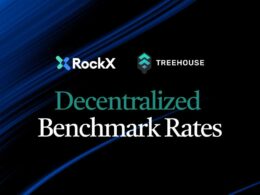The world of cryptocurrencies is populated by a vast array of different blockchains, each with its unique features and characteristics. These blockchains are the backbone of the crypto ecosystem, providing the infrastructure necessary for creating, transferring, and storing digital assets.
While many of these blockchains share certain commonalities, such as their use of distributed ledger technology and cryptographic protocols, there are also significant differences that set them apart. Some blockchains prioritise speed and scalability, while others focus on security and decentralisation. Some are designed for specific use cases, such as smart contracts or privacy, while others aim to be more general-purpose.
Today, we are covering Fantom, a fast, high-throughput open-source smart contract platform for digital assets and dApps. Recently, it underwent a major upgrade that moved it away from Ethereum and onto its own Virtual Machine. Let’s go through how Fantom’s new Virtual Machine makes it attractive to developers.
Fantom’s New Virtual Machine FVM

While there are many blockchains available in the cryptocurrency space, as a developer, you need a high-performance blockchain.
Building on a high-performance blockchain is crucial for protocols as they can handle a large number of transactions per second (TPS), allowing for rapid and efficient data processing and enabling developers to build more scalable applications.
High-performance blockchains can process transactions faster than traditional blockchains, which can be particularly useful in industries such as finance, where speed is critical. Moreover, these blockchains can reduce transaction costs by minimising the need for intermediaries, enabling developers to build more cost-effective solutions. They further tend to focus on advanced security features as well as working seamlessly with other systems, allowing for greater interoperability and collaboration between different platforms.
As the crypto space continues to evolve, new high-performance blockchains are emerging with even more advanced features and capabilities, promising to reshape how we think about money and finance.
Fantom is one such blockchain whose Virtual Machine (FVM) is designed to be an improved version of the Ethereum Virtual Machine (EVM) and optimised for storage and execution speed. This makes Fantom suitable for developers to build more efficient, secure, and scalable applications.
Overview of the Fantom Virtual Machine

Fantom used to leverage Ethereum Virtual Machine (EVM) to ensure compatibility with Ethereum-based protocols. But this comes with several limitations, especially low throughput. To achieve greater performance, the Fantom team decided to have its own native virtual machine.
First introduced by CEO Michael Kong at Consensus 2022, the Fantom Virtual Machine (FVM) was devised by the Fantom Foundation to solve performance issues by introducing features like parallel processing, bytecode-compression, and solidity programming language compatibility.
With FVM, the idea has been to evolve the Fantom blockchain into a massively scalable Layer-1 with fast transaction finality, low fees, and atomicity but without fragmenting the main chain with Layer-2s that sacrifice decentralisation, raise security risks, and complicate the overall user experience.
For faster and more efficient databases, the Fantom solution adopts a new data structure that compacts storage addresses and relies on files rather than key-value databases. As for smart contract execution, which the Fantom team believes has been inefficient due to large volumes of instructions to be executed, creating performance bottlenecks, the network took a two-part approach involving “super-instructions” and implementation of C++ to make it efficient.
Now, to accelerate block processing, the Fantom team found that two to three transactions in a block can be processed in parallel without clashing instead of the conventional sequencing method.
This way, the faster and more secure Fantom, which is created with an innovation-first development model, attracts new users and developers looking to build robust and scalable applications.
Advantages of Building on Fantom

The Fantom network is a high-performance blockchain platform that offers several benefits for developers and users.
To start, the Fantom network is built to be high-performance, which means that it can handle a large number of TPS. In fact, the Fantom network has been tested to handle up to 20,000 TPS, making it one of the fastest blockchain platforms in the space. This is much faster than Ethereum’s current throughput of around 15 TPS and Binance Smart Chain’s (BSC) throughput of around 300 TPS.
Fantom uses an aBFT consensus algorithm called Lachesis which makes it faster and more scalable. It also offers fast transaction finality, which means Lachesis’s output can be used immediately, and there is no need to wait for block confirmations. This high performance makes the Fantom network ideal for building applications that require fast and efficient processing of transactions.
Besides speed, the cost of processing transactions is much lower on Fantom — just a fraction of a cent — making it an attractive option for developers who want to build decentralised applications (dApps) that require low fees to onboard masses.
For security, Fantom has implemented several measures to ensure the safety of its network and users. These include a Byzantine Fault Tolerance (BFT) consensus mechanism, which makes it more resistant to attacks, and a layer of encryption that protects user data. Additionally, Fantom has an active bug bounty program, which rewards developers for identifying and reporting vulnerabilities.
The Fantom network is also EVM compatible, so developers can easily port their existing Ethereum smart contracts and dApps to the Fantom network. This makes it easy for developers to migrate their projects to the Fantom network without having to rewrite their code from scratch.
On top of it all, the Fantom network is interoperable with other blockchain networks, which means that it can communicate and interact with other blockchains. This opens up opportunities for developers to build cross-chain applications that leverage the strengths of multiple blockchain platforms.
For developers, Fantom’s user-friendly development environment, with support for multiple programming languages as well as a rich set of developer tools and APIs, makes it easy to get started. You can start building on Fantom using Solidity, Remix, Truffle, and MetaMask or utilize its robust Web3JS APIs to build wallets, explorers, or data analysis tools.
Furthermore, Fantom is a green chain with one of the lowest energy consumptions of 0.000024 – 0.000028 KWH/TXs as detailed in this tweet by the @FantomTalk Twitter account.
These features together make the Fantom network an attractive platform for developers who want to build scalable and efficient dApps. While prominent blockchains like Ethereum and BSC have a larger user base and a longer track record, Fantom’s technological advancements make it a strong contender in the blockchain space.
Use Cases for the Fantom Virtual Machine

The Fantom Virtual Machine (FVM) is a fast and scalable virtual machine designed to execute smart contracts on the Fantom network. Such a robust design makes FVM an attractive option for real-world use cases in the field of finance, supply management, medicine, and more.
DeFi is a new wave of financial applications and services that enables financial transactions to be conducted in a decentralised, trustless, and permissionless manner without the need for intermediaries. DeFi has the potential to revolutionise the way we transact and interact with financial services, but for that, it needs a suitable blockchain.
Fantom is ideal for DeFi applications due to its fast transaction speeds and low fees. At the peak of the DeFi activity, Fantom was home to more than $8 billion worth of assets, as per DeFi Llama.
DEX SpookySwap is currently the most popular DeFi project on Fantom. Other popular DeFi projects and categories on Fantom include DEXs – Equalizer Exchange, Beethoven, and Curve, lending protocols – Geist Finance and Tarot, yield aggregators – Beefy and Yearn Finance, reserve currency projects – Spartacus and Fantohm, cross-chain protocols – Synapse and Stargate, DxSale launchpad, CDP (collateralized debt position) protocols – Mimo, QiDao, and DEUS Finance, liquid staking – Stader and much more.
Besides DeFi, Fantom is also home to Non-fungible token (NFT) projects, a popular use case for blockchain technology. NFTKEY, Artion, Opera House, Painswap, and ZooCoin are some of the known NFTs projects on Fantom.
Gaming is another area where blockchain technology is being used, and Fantom is fast enough to support real-time gaming applications, while FVM supports the creation of in-game assets and economies. This has Metaland, Tankwars Zone, Warp, Crime Cash Gold, and many games launching on the network.
Overall, more than 200 dapps have been deployed on Fantom, which collectively has thousands of active daily users.
As the growing ecosystem shows, the Fantom network and its FVM have a lot of potential for real-world use cases. The fast transaction speeds, low fees, and support for popular standards make it an attractive option for developers looking to build applications.
Community and Ecosystem

Fantom has a vibrant community of not just users but also developers. While the focus here is on building a robust and decentralised infrastructure that can support a wide range of use cases, the project ensures a thriving building activity on the platform by providing a range of tools and resources for developers to quickly and easily build and deploy their dApps on the Fantom blockchain.
Fantom Developer Documentation is one such tool that is the official documentation for the Fantom platform that provides a comprehensive guide to building dApps on the platform, including instructions on how to set up a development environment, use the Fantom API, and write smart contracts.
The Fantom GitHub repository meanwhile provides access to the source code for the Fantom platform. Developers can use this code to build custom dApps or contribute to the platform’s development. Fantom even has a Gitcoin Grants program to promote a rich and diverse ecosystem on the platform.
But this is not all. Fantom’s active, engaging, and supportive community allows developers and users to connect with other members, share knowledge and expertise, and get support.
Developers can further gain support through various other channels, including Discord, where they can ask questions, get help with technical issues, exchange ideas, connect with other developers in the community, and collaborate on projects.
A booming community like this presents a potential for growth and exposure. Being part of the Fantom ecosystem can provide developers with exposure to a growing and dynamic community of blockchain enthusiasts, investors, and users. This can help developers to gain visibility for their projects and potentially attract investment or funding.
Conclusion

As crypto adoption continues to grow, the space needs a blockchain that can handle a large number of users at a low cost while ensuring a safer experience.
And as we talked about above, Fantom is an expanding platform with advanced features and capabilities. By launching its new Virtual Machine that is designed to be scalable and offers high performance with security in mind, it offers a perfect platform for developers who are looking to build scalable, efficient, and innovative decentralised applications of the future.
Build on Fantom With RockX
If the future of Fantom sounds exciting to you and you’d like to try out building on Fantom right away, consider using RockX’s access node API. With free plans available and free credits issued for referrals, it’s a risk-free way to try out building something on Fantom.









